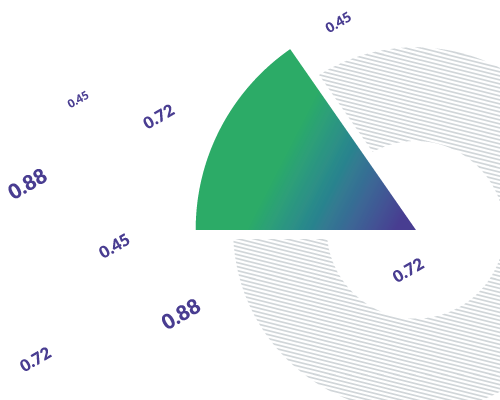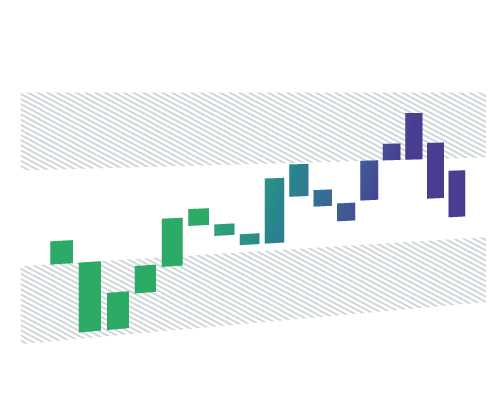With the introduction of fractional trading coupled with the race to zero commissions, the competition for clients has become immense. Brokerages that don’t offer it might be disadvantaged due to their lack of adaptability.
While eliminating commissions hasn’t required much effort from a technological perspective, introducing fractional trading calls for software upgrades.
But before we unwrap this topic, let’s run through the basics.
What is Fractional Trading?

Fractional trading allows investors to buy and sell fractional quantities of an asset instead of trading round lots or whole share increments. For example, if a brokerage only supports whole share trading, and investors want to buy Apple stock, they’d need to invest in $148.00 increments (the price per share at the time of writing). Fractional share trading allows investors to purchase smaller increments, instead, for example, 0.1 shares for only $14.80. This allows investors to diversify their holdings if they have a smaller portfolio. It’s also much more affordable than buying an entire share, accessible to investors with limited access to standard investment opportunities, and feasible for more capital to flow into the market.
What is Notional Trading?
Notional trading allows investors to trade in currency-based increments. For example, say an investor wants to buy two instruments for $500. They can issue orders for $250 each rather than specific quantities, which may be unequal. After order execution, the investor will have fractional quantities of the purchased assets in their portfolio.
What’s in It for Brokers?
Fractional share trading provides brokers with a dramatic competitive differentiator. For traders, it means access to stocks they otherwise might not be able to invest in. Traders will also possess more decision-making power since they can tap into more possibilities.
For brokers, implementing the fractional trading workflow leads to a larger and more diverse customer base. More clientele equals more assets under management. Subsequently, as investors grow—their brokers do too.
To implement this, brokerages need to upgrade their technology and decide how fractional trading will work for their customers.
How the Broker’s Side Supports Fractional Orders

Brokers may adopt two main approaches to support fractional orders. The first is routing fractional and notional orders directly to their executing destination. The second allows brokers to manage their fractional inventory, offering more control but also more risk.
Route as Received
The first approach is called Route as Received. In this scenario, when a broker receives a fractional or notional order from a client or buy-side, they route it to an executing destination as is. This counterparty handles all fractional workflow logistics, and when a broker gets the trade execution back in their order management system, it’s reflected in the fractional or notional quantities accordingly.
The advantage of this method is that a broker doesn’t have to keep a fractional inventory on their side. This means less risk exposure and less hassle in terms of technology at the trade desk. Of course, a broker will need to update their client-facing front ends to support fractional and notional quantities and their order management system and admin console.
The downside is that a broker’s clients will only get to trade stocks offered by their executing venue at fractional precision. The venue’s offering could be very limited, pushing a broker into a reliant position. Also, fractional execution fees may present another impediment.
Internal Fractional Inventory Management

The second approach offers brokers the ability to manage fractional orders internally. Based on our market research, we’ve seen an upward trend in broker-dealers looking to support fractional trading, so this approach is useful.
To support an automated solution, brokers can leverage a fractional rounding algorithm to manage incoming order flow. With the algorithm, the trading workflow is as follows:
- A customer issues a fractional order, e.g., for 0.5 shares.
- The broker either fills this order from their inventory, or rounds it up and routes it to their market-maker or exchange in a whole share quantity.
- After receiving the execution, the broker fills the customer’s account for the original order quantity and allocates the remainder to their inventory account.
When brokers support fractional inventory accounts with a rounding algorithm, they have full control over the workflow and securities. Therefore, in a scenario where a broker wants to have a competitive edge in the market and offer any security no matter its full price, even those hard-to-borrow, they can do it.
The disadvantage of an internal fractional inventory is increased risk exposure. However, you can benefit from automated solutions to manage it.
Two Ways to Limit Risk Exposure
When brokers support internal inventory management, they must limit their risk exposure.

A broker can do this through an optional feature called Fill from Inventory. Besides the ability to round orders and route whole share quantities to destinations, brokers can set the algorithm for filling orders directly from their inventories. This way, when a client order comes in, a broker can set the parameters for the order to be filled directly from inventory, negating the need for principal trading and more exposure by increasing the inventory.
The second scenario required by the market is automated position closure. When a broker internally manages a fractional inventory and gets multiple orders for the same stock on the same side, their inventory might quickly jump higher than expected. Automated position closure allows a broker to set maximum exposure in shares for their inventory account.
For example, a broker never wants to have more than five shares of a given stock in their inventory account. By setting a limit of five shares, as soon as the quantity for any position goes above the limit, the algorithm triggers a sell order for the whole share portion of the position, thus limiting exposure at all times.
Pre-Allocated Block Orders

Pre-allocated block order is an order type that helps portfolio managers to purchase or sell large quantities of securities executed as a single trade. It’s designed for RIAs and institutional brokerages that use a consolidation engine to create block orders. This means they can group orders (including those in fractional and notional amounts) before sending them for execution. After such a block order is filled, an OMS allocates quantities to end clients.
This order type can work with both approaches mentioned above in conjunction with pre-allocated block orders. It’s equally efficient for routing orders as received and for rounding orders. This tool can create cost savings and operational efficiencies.
The Bottom Line
The staple of fractional trading is proper technology. At Devexperts, we have DXtrade XT – a multi-asset trading platform that lives up to the challenge. It comprises a fractional OMS, a proprietary charting library, a web broker, an admin console, an execution simulator, mobile and web trading frontends, FIX/FAST gateways, flexible APIs (Java, C#, JavaScript, Python, FIX, and REST), and market data connectivity. It’s everything a broker needs to launch from scratch or add a fractional workflow to their operations.

